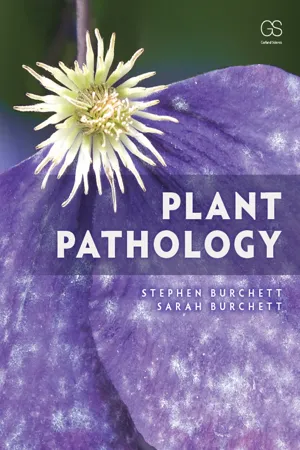Biological Sciences
Dutch Elm Disease
Dutch Elm Disease is a fungal infection that affects elm trees, caused by the pathogen Ophiostoma novo-ulmi. It is spread by elm bark beetles and disrupts the tree's water-conducting vessels, leading to wilting and eventual death. The disease has had a significant impact on elm tree populations in Europe and North America, leading to widespread tree loss and changes in urban and forest landscapes.
Written by Perlego with AI-assistance
Related key terms
1 Key excerpts on "Dutch Elm Disease"
- eBook - ePub
- Stephen Burchett, Sarah Burchett(Authors)
- 2017(Publication Date)
- Garland Science(Publisher)
This plant disease caused the deaths of over 1 million people, and compelled a further 2 million to emigrate, mostly to the USA. The second example, Dutch Elm Disease, did not directly affect food supply but did result in a profound change to the rural landscape of the UK. During the 1960s and 1970s, an outbreak of Dutch Elm Disease (caused by Ceratocystis ulmi, a fungal pathogen spread by the bark beetle, Scolytus scolytus) resulted in the widespread loss of English elm (Ulmus procera). It was estimated that around 25 million elm trees were lost. This had a significant impact on the rural landscape, removing a rural icon from many regions of the UK. A similar problem, known as sudden oak death (caused by Phytophthora ramorum), is now facing managers of stately homes, rural estates, popular public gardens, and woodlands. This problem is not restricted to the UK, as P. ramorum has also had an impact on landscapes in the USA and further afield, such as Big Sur in California, where many tanoaks (Lithocarpus densiflorus) have succumbed to the disease. Furthermore, P. ramorum is not restricted to oak species, as the common name of the disease implies, but is affecting a number of other tree genera, such as the larch (Larix species). These well-known examples illustrate how plant pathogens have both direct and indirect effects on human societies. Another excellent historical example is the way that coffee leaf rust resulted in the UK becoming a nation of tea drinkers. Globally, coffee (Coffea arabica) is a highly valuable crop; the global value of green coffee in 2013 was estimated to be US$ 9.8 billion. The major fungal pathogen of coffee is coffee leaf rust (Hemileia vastatrix), which leads to total defoliation of coffee plants in the second year of infection
Learn about this page
Index pages curate the most relevant extracts from our library of academic textbooks. They’ve been created using an in-house natural language model (NLM), each adding context and meaning to key research topics.
